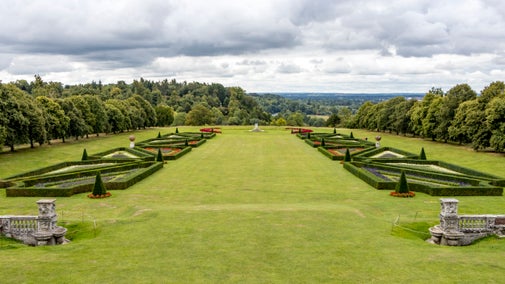
Cliveden's collections
Explore the objects and works of art we care for at Cliveden on the National Trust Collections website.
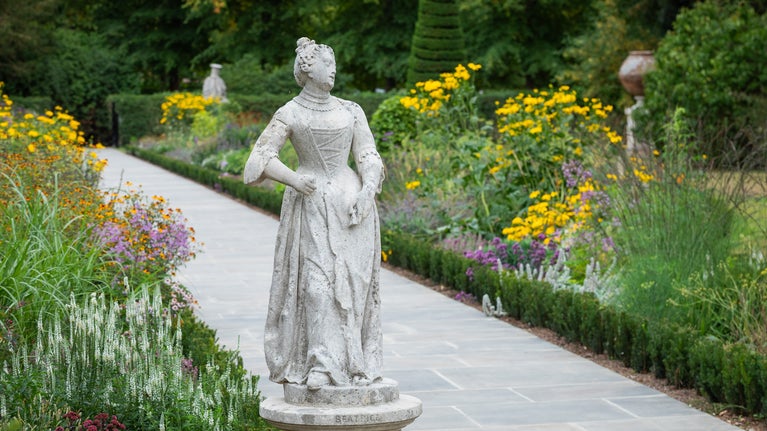
Cliveden is home to one of the most important sculpture collections in the National Trust. From ancient Roman sarcophagi to works by world-renowned Victorian sculptors, the quality and variety of the collection illustrates the contrasting tastes of its main collectors: the Duke (1786–1861) and Duchess (1808–1868) of Sutherland and William Waldorf Astor (1848–1919). The Sutherland’s were patrons of ‘new' art, enthusiastically embracing the contemporary sculptors of their day. In contrast Astor’s collection focussed on works from the classical world and renaissance Italy.
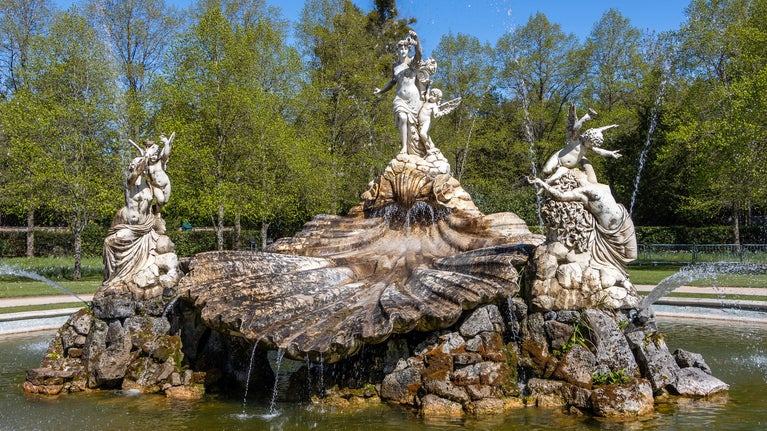
Female figures frolic with winged putti amidst jets of water. This sensuous marble group, situated prominently on the Grand Avenue, was commissioned by William Walforf Astor from the sculptor Thomas Waldo Story.
Astor described the draped female figures as having discovered the fountain of love, caught at the point of ‘experiencing its wonderful elixir’. Astor displayed both boldness and courage in commissioning a contemporary artist to create such a dramatic, monumental piece.
It’s unusual that a collector of sculpture is also a practitioner of the art. But Lord Astor was unique in this regard and this marble sculpture of a wounded Amazon may be his only existing signed work.
The Amazons were a race of warrior women in Greek mythology skilled with the bow and in horsemanship. Astor’s composition is based on classical examples but reinterpreted in a Romantic vein.
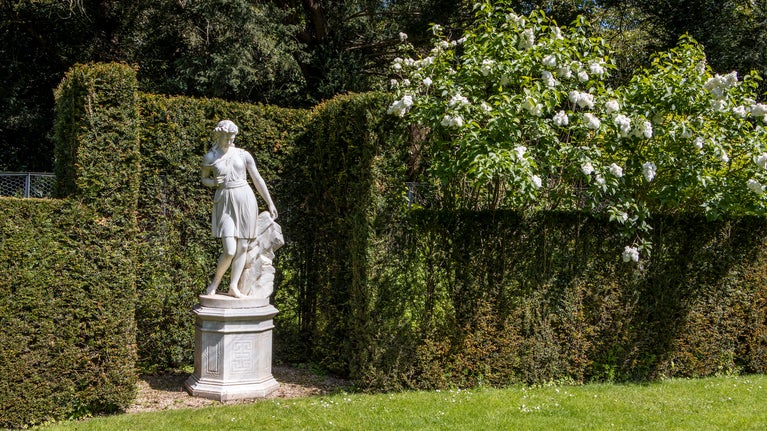
The image of Joan of Arc was a potent symbol in the vision of a unified France under Louis-Philippe, who was sworn in as King in 1830 following the July Revolution. In 1835 Louis-Philippe commissioned a marble statue of Saint Joan from his daughter, Princess Marie Christine d’Orléans.
It proved to be a popular piece of sculpture and many copies were made. This bronze copy was brought to Cliveden by the Duchess of Sutherland who along with her son Lord Ronald Gower visited Joan of Arcs birthplace. Ronald went on to publish a biography of Joan in 1893.
In this statue, Prince Albert strikes a solitary figure, standing on a rocky cairn in Highland dress. Despite its Romantic, rugged quality, the cast was produced in Birmingham using the ultra-modern method of electroplating.
During his life Albert was interested in marrying 'high art with mechanical skill'. He even visited the factory of Elkington & Co. to witness first-hand the pioneering sculptural method to produce casts like this. The Prince is presented in a private and personal mode rather than in the ceremonial clothes of a Royal Consort, reflecting the intimate, rather than official relationship enjoyed between Harriet Duchess of Sutherland and Queen Victoria.
The Sutherlands made extensive acquisitions of modern French sculpture, and this is perhaps the most radical of them all. Liberty is depicted as a male figure, crowned with a star, holding the torch of civilisation in one hand, and the snapped chain of bondage in the other.
Based upon an original sculpture in Paris that commemorated the July Revolution of 1830 in France, this figure of Liberty sculpture chimed well with the Sutherlands' taste for the modern and the innovative.
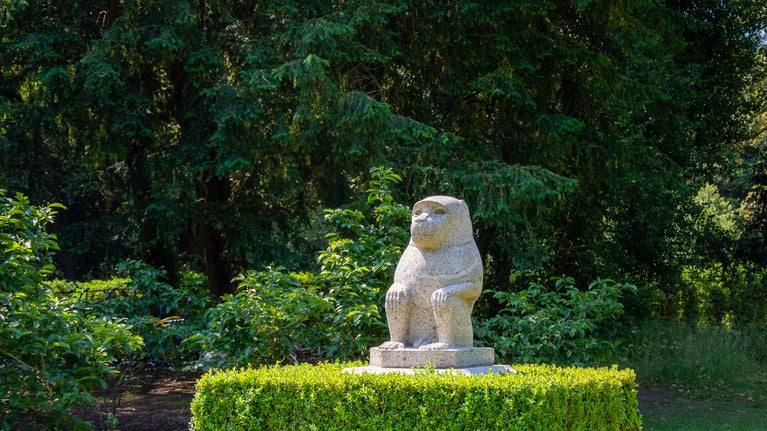
According to William Waldorf Astor the two granite baboons in Cliveden’s collection were, ‘…found by me in Rome in 1898. They are Egyptian, of Great Antiquity, and doubtless stood before a temple dedicated to Thoth.’
Thoth was the ancient Egyptian god of writing and wisdom often depicted with the head of a baboon, which is considered to be a sacred animal.
Following his purchase Astor placed the baboons in his newly redesigned Long Garden, along with other pieces from his collection. The sculptures were removed in the 1960s and were in private ownership until they were donated back to the National Trust in the early 21st century.
Prior to their return to the garden, it was necessary for them to undergo complex and painstaking conservation work with sculpture specialists. One baboon was in a particularly poor state of repair, having been broken into several pieces in a fall.
The baboons' return to the garden was made possible by visitors who contributed over £12,000 to their conservation and reinstallation by buying a ticket for our annual raffle.
Some of the most remarkable objects in the collection are the eight ancient Roman sarcophagi (which translates from ancient Greek as flesh-eating stone) on display in the forecourt. William Waldorf Astor’s love of the ancient world was fostered during his time as the American Italian Interior Minister in Rome in the 1880s, from where he collected many of the classical pieces in his collection.
Constructed as burial containers the sarcophagi are decorated with a wonderful variety of designs from abstract, linear patterns to incredibly detailed mythological scenes.
Cliveden features in episode 2 of the second BBC series of Hidden Treasures of the National Trust. The programme looks at the wonderful collection at Cliveden as well as focussing on our amazing group of statue cleaning volunteers. Go to BBC iPlayer to find out more!
To discover more of the wonderful objects we look after at Cliveden please visit the NT collections database here,

Explore the objects and works of art we care for at Cliveden on the National Trust Collections website.
The art and heritage collections we care for rival the world’s greatest museums. Learn more about the collection of paintings, decorative art, costume, books, household and other objects at historic places.
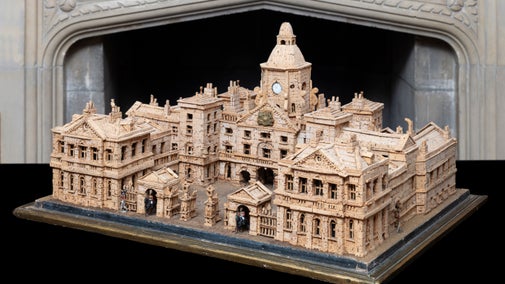
Follow our conservators, curators and volunteers at work and get closer to the objects they care for in the BBC's Hidden Treasures of the National Trust.
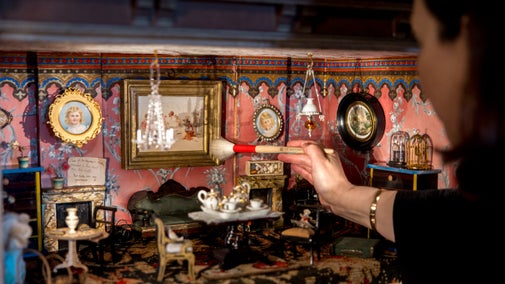
Discover the stories behind some of the greatest artworks and artefacts looked after by the National Trust, as told in a dedicated book, 125 Treasures from the Collections of the National Trust.

See the breadth of our collection of works of art, furniture and more: we care for around a million objects at over 200 historic places, there’s a surprise discovery around every corner.

Follow in the footsteps of dukes, earls, kings and queens as you stroll through a series of impressive spaces at Cliveden this winter, each with its own special charm.
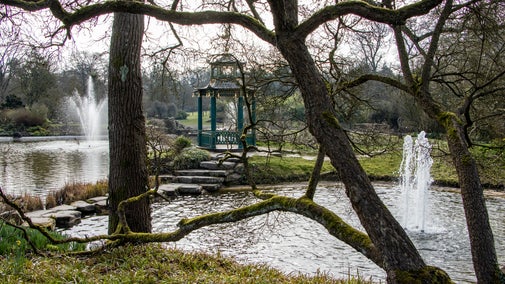
Discover the background and history of some of the main features in the garden at Cliveden and who was responsible for commissioning and designing them.

Take a guided tour of Cliveden house – now a luxury hotel – and visit the chapel, final resting place of three generations of Astor family.
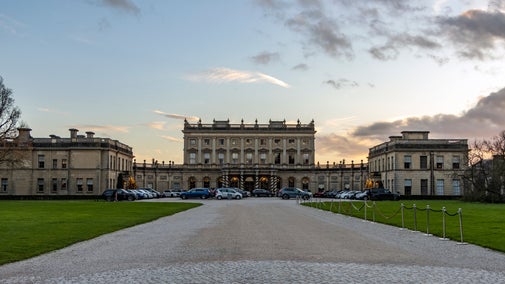
For over 300 years Cliveden was home to dukes, earls, viscounts and even a prince. Learn how it became a glittering hub for exclusive parties and political gatherings.
